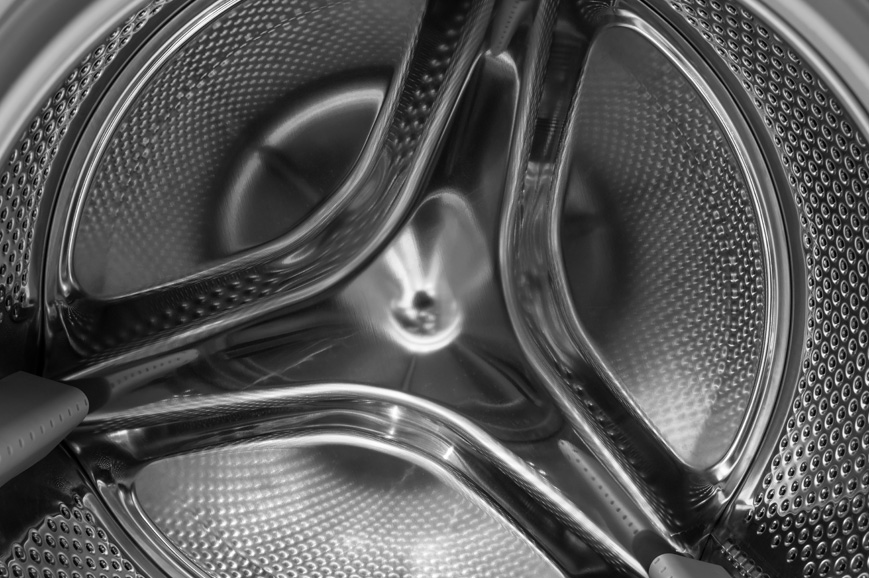Pulling fresh, warm laundry from your dryer is a simple joy—until a musty, burning, or sour odor greets you. If you’ve been asking, “How To Clean A Smelly Dryer In 2025?”, this comprehensive, step‑by‑step guide is for you. We’ll explore why dryers develop unpleasant smells, outline daily and deep‑clean routines, share advanced 2025‑era tips, and explain when to call a professional. By the end, you’ll have everything you need to keep your dryer—and your clothes—fresh and odor‑free.
Why Does Your Dryer Develop Odors?
Before you tackle the smell, it helps to understand the main causes. In 2025, even the most modern dryers can fall victim to:
- Lint Build‑Up and Overheating
- Cause: Tiny fibers from clothes collect in the lint trap, housing, and vent ducts. When airflow is restricted, the dryer overheats, producing a faint burning smell.
- Risk: Not only does this lead to odors, but it also raises the risk of dryer fires.
- Mildew and Mold Growth
- Cause: Moisture from damp clothes lingers inside the drum, door gasket, and exhaust vents. In humid environments, this dampness encourages mold and mildew, resulting in a sour or musty smell.
- Risk: Mold spores can irritate allergies and reduce air quality in your home.
- Residue from Detergents and Fabric Softeners
- Cause: Over‑use of liquid detergents or softeners leaves a film on drum surfaces and seals. Over time, this residue traps dirt and bacteria, creating a stale, chemical odor.
- Risk: Residue can stain clothes, reduce dryer efficiency, and contribute to lingering smells.
- Foreign Objects and Debris
- Cause: Coins, tissues, pet hair, and even small toys sometimes end up in pockets and collect inside the drum or vent ducts. Organic debris can decompose and smell foul.
- Risk: Clogs in vents and hoses, plus potential mechanical damage.
- Mechanical Issues and Off‑Gassing
- Cause: New dryer components—belts, motors, rollers—may emit a temporary “new machine” or plastic‑burning smell. Worn parts, like bearings or belts, can overheat and produce a burning plastic or rubber odor.
- Risk: Unchecked mechanical problems may lead to breakdowns or safety hazards.
Recognizing the source of your dryer’s unpleasant scent is the first step in choosing the right cleaning method.
Key Principles for an Odor‑Free Dryer in 2025
Whether you own a state‑of‑the‑art smart dryer or a reliable classic model, these core principles apply:
1. Maximize Airflow
- Keep lint traps, vents, and ducts clear. Good airflow prevents overheating and stops moisture from lingering.
2. Control Moisture
- Eliminate dampness by leaving the door open after cycles and ensuring vents exhaust fully to the outside.
3. Maintain Clean Surfaces
- Wipe down drums, gaskets, and vents regularly to remove residue and bacteria.
4. Inspect and Replace
- Check seals, belts, and hoses for wear. Replace parts promptly to avoid mechanical odors and efficiency loss.
5. Leverage 2025 Technologies
- Use smart‑home apps, sensor alerts, and specialized vent‑cleaning tools designed for today’s appliances.
- By combining these principles with regular maintenance, you’ll drastically reduce odors and keep your dryer running safely and efficiently.
Daily and Weekly Maintenance: Your First Line of Defense
Small tasks performed consistently can prevent most dryer smells. Incorporate these into your routine:
1. Clean the Lint Trap After Every Load
- How: Remove the lint screen, peel off the lint, and brush the mesh gently with a soft‑bristle brush.
- Why: A clear trap maximizes airflow, prevents overheating, and reduces fire risk.
2. Wipe the Drum Surface Weekly
- How: Use a damp microfiber cloth with a mild dish soap solution to wipe the drum interior. Rinse with a cloth dampened in plain water.
- Why: Removes residue from detergents, dryer sheets, and fabric softeners that trap odors.
3. Inspect the Door Gasket and Seals
- How: Look for trapped lint or debris around the door seal. Wipe with a cloth dampened in a 1:1 water‑vinegar mix.
- Why: Keeps the seal clean, prevents mildew growth, and maintains an airtight closure.
4. Leave the Dryer Door Ajar
- How: After the final load of the day, prop the dryer door open a crack.
- Why: Allows moisture to evaporate, reducing mildew and musty smells.
5. Run a Quick Vinegar Cycle Monthly
- How: Place a few clean towels dampened with white vinegar in the dryer and run on a high‑heat, short cycle.
- Why: Vinegar is a natural disinfectant that kills mold spores and neutralizes odors.
These simple habits can eliminate most common dryer smells before they become a problem.
Deep Cleaning Your Dryer: A Step‑By‑Step 2025 Protocol
Every three to six months, your dryer needs a thorough cleaning to reach hidden areas and keep it in top condition. Follow this detailed process:
Step 1: Ensure Safety
- Unplug the Dryer: Always disconnect power before beginning.
- Turn Off Gas Supply: If you have a gas dryer, shut off the gas valve.
Step 2: Remove and Clean the Lint Trap Housing
- Take Out the Lint Screen: Set it aside.
- Vacuum Inside the Housing: Use a narrow vacuum attachment or dryer vent brush to clear lint and debris from the trap cavity.
- Inspect for Mold: If you see black spots or mold, wipe with a cloth soaked in a 1:1 water‑vinegar solution. Rinse and dry thoroughly.
Step 3: Wipe Down the Drum and Interior Surfaces
- Prepare a Cleaning Solution: Mix warm water, a few drops of gentle dish soap, and ½ cup white vinegar.
- Clean the Drum: Dip a microfiber cloth in the solution, wring out excess liquid, and wipe the entire drum interior.
- Focus on Stubborn Spots: For fabric softener or wax residue, apply a paste of baking soda and water. Rub gently, then rinse.
- Dry the Drum: Wipe with a clean, dry cloth to remove moisture.
Step 4: Clean Door Seals and Gaskets
- Inspect Seals Closely: Pull back gaskets to check for hidden lint or mold.
- Disinfect: Wipe all seals with the vinegar solution, then rinse with plain water.
- Dry Thoroughly: Mold thrives in damp areas, so ensure the seals are completely dry before reassembly.
Step 5: Service the Exhaust Vent and Ductwork
- Disconnect the Vent Hose: Carefully pull the flexible vent away from the dryer’s exhaust outlet.
- Brush and Vacuum the Hose: Feed a vent cleaning brush through the duct, twisting as you push to dislodge lint. Then vacuum the loosened debris.
- Clean the Exterior Vent Cap: Go outside and remove the vent cover. Clear any blockages, and clean the flapper or louvers.
- Reassemble Securely: Reattach the hose and ensure clamps are tight to prevent leaks.
Step 6: Check and Clean the Moisture Sensors
- Locate the Sensors: Usually two metal strips on the drum interior near the lint trap.
- Wipe Clean: Use a cloth dampened with rubbing alcohol to remove mineral deposits and fabric softener residue.
- Test the Sensor Function: Run a short, empty cycle to ensure the dryer senses dryness correctly.
Step 7: Inspect Internal Components (Optional for DIYers)
Only if you’re comfortable and the manufacturer’s warranty allows:
- Remove the Dryer Cabinet: Unscrew panels to expose belts, rollers, and the blower housing.
- Vacuum Dust and Lint: Clear debris from around the motor, belt, and blower fan.
- Lubricate Moving Parts: Apply a few drops of high‑temperature appliance oil to bearings if recommended by your model’s manual.
- Reassemble Carefully: Ensure all wires and hoses are correctly reconnected before closing the cabinet.

Tackling Specific Dryer Odors
Even after routine and deep cleaning, you may face lingering or unusual smells. Here’s how to address them:
Burning or Overheating Smell
- Likely Cause: Lint‑clogged vent, failing belt, or motor overheating.
- Action: Immediately clean vents thoroughly. If the smell persists, inspect belts and motors for wear or fraying. Replace parts as needed.
Musty or Mildew Smell
- Likely Cause: Residual moisture trapped in drum or vent.
- Action: Run a vinegar towel cycle. Leave the door open after each use. If mold returns, treat affected areas with a bleach solution (1 tablespoon bleach to 1 cup water), rinse, and dry completely.
Chemical or Plastic Odor
- Likely Cause: New dryer off‑gassing or melting plastic from foreign objects.
- Action: For new dryers, run an empty high‑heat cycle for 30 minutes before first use to burn off manufacturing residues. If the smell comes from plastic, unplug the dryer, locate and remove melted plastic or foreign debris, and clean the area thoroughly.
Rotten or Decomposing Smell
- Likely Cause: Food particles, pet hair, or small objects left in pockets.
- Action: Inspect and vacuum the drum and lint trap housing. Run an empty cycle with baking soda‑dampened towels to neutralize odors.
Advanced 2025 Tips for a Spotless Dryer
In 2025, new tools and smart‑home features can simplify dryer maintenance and odor prevention:
1. Smart Dryer Apps and Alerts
- Many dryers now connect to smartphone apps that notify you when vents need cleaning or when cycle sensors detect excess moisture.
2. IoT‑Enabled Vent Cleaners
- Robotic vent‑cleaning devices navigate ductwork autonomously, using built‑in cameras to identify and clear blockages.
3. High‑Efficiency HEPA Vacuums
- HEPA‑filtered vacuums capture 99.97% of particles, preventing lint and mold spores from re‑entering your home.
4. Antimicrobial Drum Coatings
- Some 2025 dryer models feature drum liners treated with silver‑ion technology to inhibit bacterial and fungal growth.
5. Eco‑Friendly Dryer Balls with Essential Oils
- Reusable wool dryer balls infused with natural antimicrobial oils (e.g., tea tree, eucalyptus) can freshen clothes and reduce static without chemicals.
6. Ultraviolet (UV) Drum Sanitizers
- Stand‑alone UV wands or built‑in UV lights eliminate bacteria and mold spores between cycles. Always follow safety guidelines when using UV devices. By embracing these innovations, you can streamline your cleaning routine and maintain a truly fresh dryer environment.
Preventive Measures to Keep Your Dryer Smelling Fresh
Beyond cleaning, adopt these habits to stop odors before they start:
- Use the Correct Detergent Amount
- Over‑dosing detergent leads to excess suds and residue. Follow manufacturer recommendations.
- Avoid Overloading
- Packing the drum too full prevents clothes from tumbling freely, trapping moisture and lint.
- Air‑Dry When Possible
- Occasionally hang damp items or use a drying rack to reduce strain on your dryer and limit moisture buildup.
- Inspect Pockets Before Washing
- Empty wallets, remove tissues, and shake out pet hair to keep foreign debris out of your dryer.
- Schedule Annual Professional Vent Cleaning
- Even the best DIY efforts miss some lint. A certified technician can clean vents from roof to dryer, ensuring maximum airflow.
- Monitor Humidity Levels
- In humid climates, use a dehumidifier in your laundry room to help dry out any residual moisture.
These proactive steps, combined with regular and deep cleaning, will keep your dryer—and your laundry—smelling fresh year‑round.
When to Call a Professional
Despite your best efforts, some issues require expert attention:
- Persistent Burning Smell: Could indicate a failing motor or belt that needs replacement.
- Mold Infestation: If mold returns rapidly after cleaning, professional mold remediation may be necessary.
- Vent Obstructions Beyond Reach: Long or complex duct runs often require commercial‑grade tools and expertise.
- Electrical or Gas Concerns: Any sign of sparking, gas leaks, or unusual sounds demands immediate professional service.
Hiring a licensed appliance repair or HVAC technician ensures safety and can extend the life of your dryer.
Conclusion: Mastering “How To Clean A Smelly Dryer In 2025”
By understanding odor causes, committing to daily and deep‑clean routines, leveraging 2025’s smart tools, and taking preventive measures, you can banish bad smells and keep your dryer running at peak performance. Remember these key takeaways:
- Clean the lint trap after every load to maintain airflow and prevent fire risks.
- Deep clean every 3–6 months, focusing on the drum, seals, lint housing, and vent ducts.
- Address specific odors—burning, mildew, or chemical—using targeted solutions like vinegar cycles, bleach treatments, or mechanical inspections.
- Adopt advanced tools like smart‑home alerts, HEPA vacuums, and UV sanitizers to simplify maintenance.
- Know when to call a professional for complex or hazardous issues.
With this 2,000‑word guide on How To Clean A Smelly Dryer In 2025, you have the knowledge and steps needed for a fresh, efficient, and safe dryer experience. Regular upkeep not only preserves your clothes and linens but also protects your home and family from odor‑related issues and fire hazards. Put these tips into practice, and enjoy the simple pleasure of truly clean, warm laundry—every single time.

